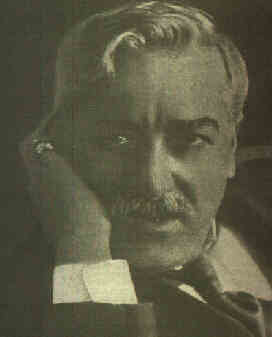- Giambattista De Curtis
Infobox Person
name= Giambattista De Curtis
caption= Giambattista De Curtis, Neapolitan poet
birth_date= birth date|1860|7|20|mf=y
birth_place=Naples ,Italy
dead=dead
death_date= death date and age|1926|1|15|1860|3|12|mf=y
death_place=Naples ,Italy Giambattista de Curtis (
Naples ,July 20 ,1860 -Naples,January 15 ,1926 ) was an Italian painter and poet remembered today for his song lyrics.Born into a noble Neopolitan family, de Curtis was the firstborn of the
fresco painter Giuseppe de Curtis and his wife, Elisabetta Minnon, and was a great-grandson of composerSaverio Mercadante . He expressed his first interest in painting, which he learned from his father, and which he perfected to the point that he was called a "contemporarySalvator Rosa ". He was a complete artist, writing poetry and theatrical works as well as verses for popular songs; he was also a sculptor. His love forNeapolitan song led him to collaborate with composerVincenzo Valente , at the time a lodger at the de Curtis family palace in corso Garibaldi. It was, in fact, Valente who in 1889 set to music his first song, "A Pacchianella"; the following year, he set another of de Curtis's texts, "Muglierema come fa?". "'I Pazziava" followed in 1890, and "Ninuccia" in 1894; "Tiempe Felice" came in 1895. De Curtis never stopped writing songs and poems; it seems, however, to have never been much more for him than a way to pass the time.De Curtis felt a great love for
Sorrento , where from 1891 until 1910 he passed six months of every year at the Grand Hotel of Guglielmo Tramontano, who was mayor at the time. There, in 1892, he met Carmela Maione, who would inspire his most famous song, "Duorme Carme'". The daughter of acolonel who served with Tramontano, she lived inFuorimura . Supposedly, the subject of the song came from a conversation the two had in the lobby of the hotel; de Curtis asked the girl what she usually did, and she responded, "Sleep". This inspired de Curtis to write a song, the refrain to which begins:Duorme Carmè:‘o cchiù bello d’’a vita è ‘o ddurmì…
This was typical of his working style; when composing song lyrics he would often be inspired by some encounter or other that he had had. Indeed, de Curtis was by all accounts a curious and amiable man, and was rarely without a compliment for an attractive woman; he courted many, and would often dedicate his lyrics to them. Nevertheless, he did not wed until 1910, when, at the age of fifty and after nearly twenty years' engagement, he married Carolina Scognamiglio.Tramontano and de Curtis were great friends, and the mayor hired him to decorate some of the rooms of the hotel with his frescos; he also painted some canvases there, and wrote poetry and songs. Among these was the celebrated song "
Torna a Surriento ", supposedly born of a stay in 1902 by theprime minister of Italy ,Giuseppe Zanardelli , at the hotel; Tramontano asked de Curtis and his brother, Ernesto, to write a song honoring the statesman. More recent research indicates that the song may merely have been reworked for the occasion; family papers indicate that the brothers deposited a copy with theItalian Society of Authors and Editors in 1894, eight years before they claimed to have written it.The artistic association between the de Curtis brothers bore other fruit, as well, beginning in 1897 with the publication of "'A primma vota"; it continued even after Ernesto moved to the
United States in 1920, after which the two continued their collaborations by mail. Among their other songs was "Amalia", published in 1902 and dedicated to Ernesto's new wife, Amalia Russo. In 1911 the brothers had another success, the song "Lucia Lucì ('i m'arricordo 'e te)".De Curtis moved to
Vomero in 1916, living in via Luca Giordano next door to theVilla Floridiana . He continued to write and paint until his death in January of 1926 from a progressiveparalysis . Some days after his passing a letter from Ernesto reached his house. It read:Dear Giambattista, I enclose for you music for the song which you sent me last month; I hope it pleases you.
References
:"This article is based on a translation of the corresponding article in the Italian Wikipedia."
Wikimedia Foundation. 2010.
